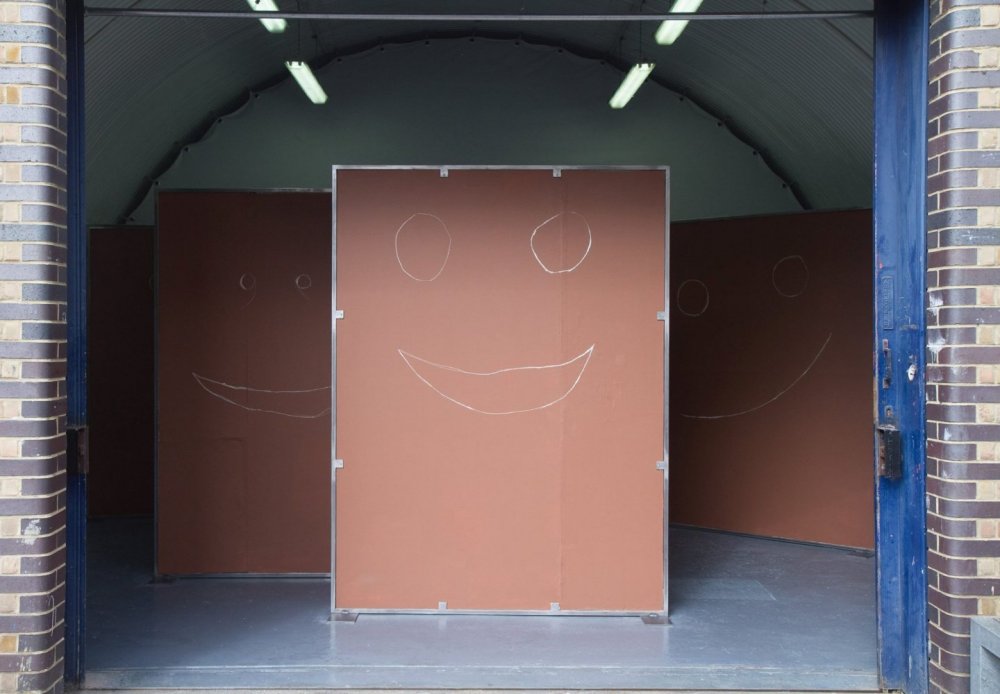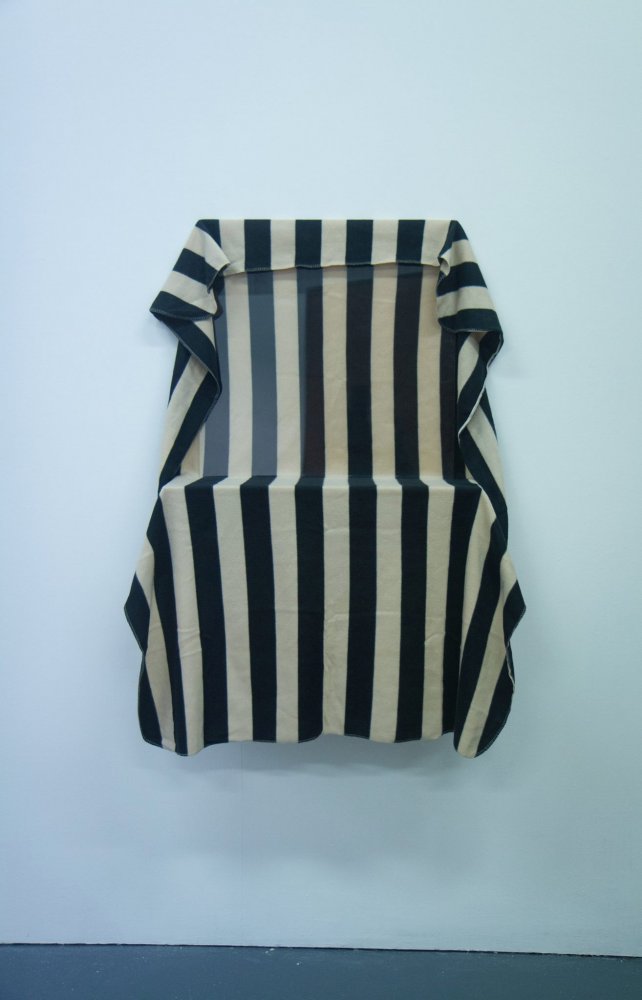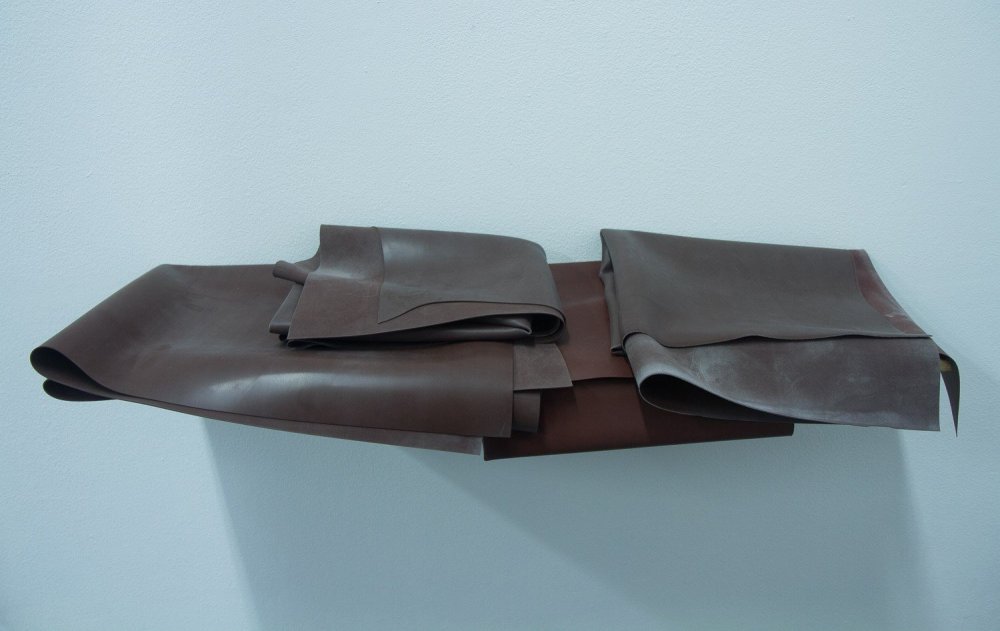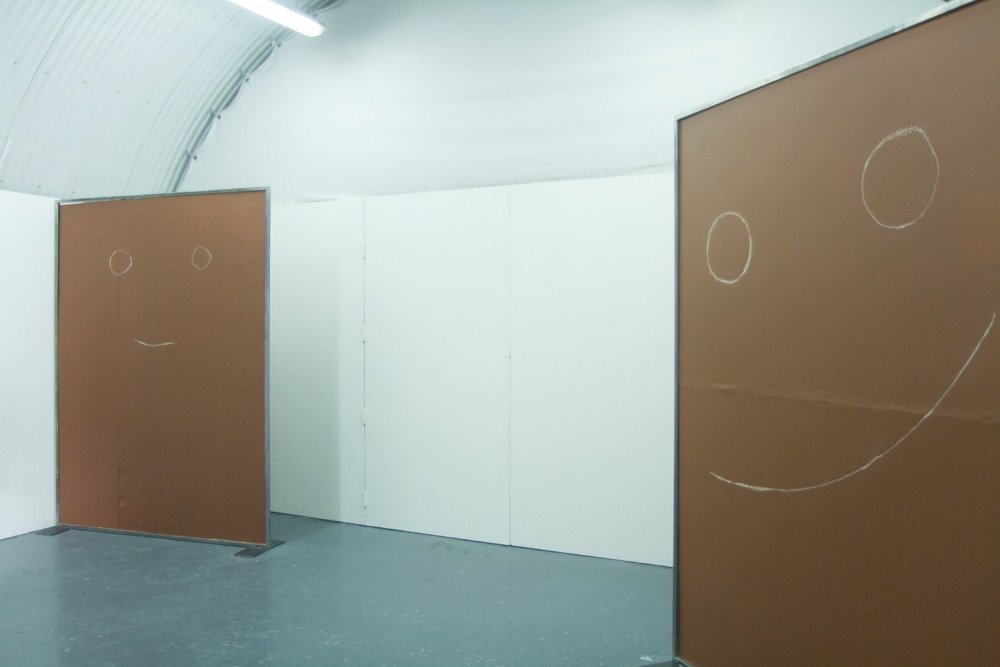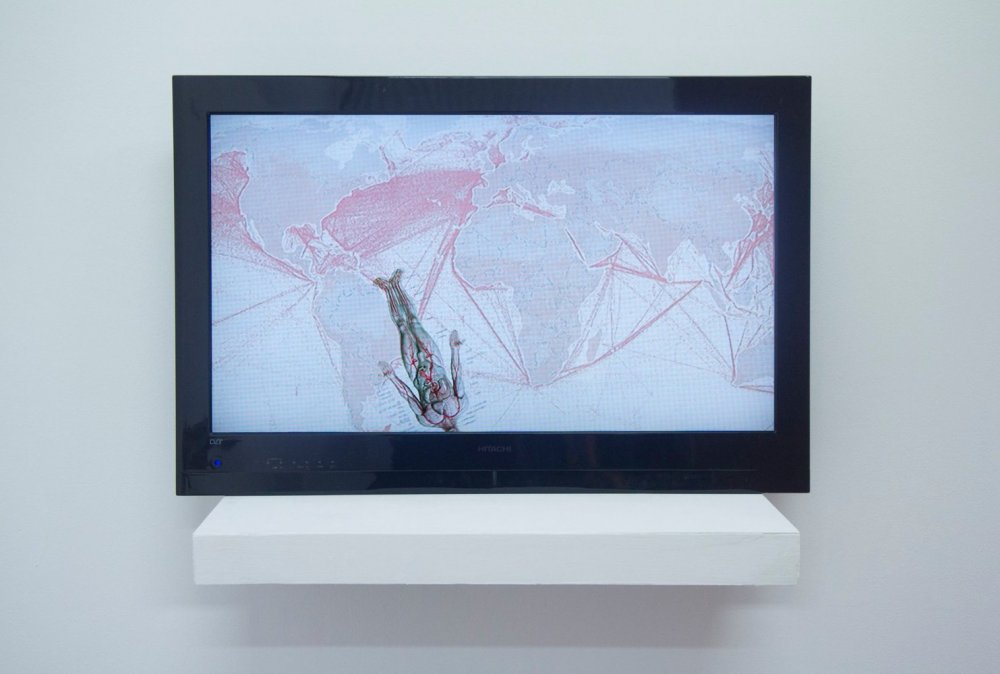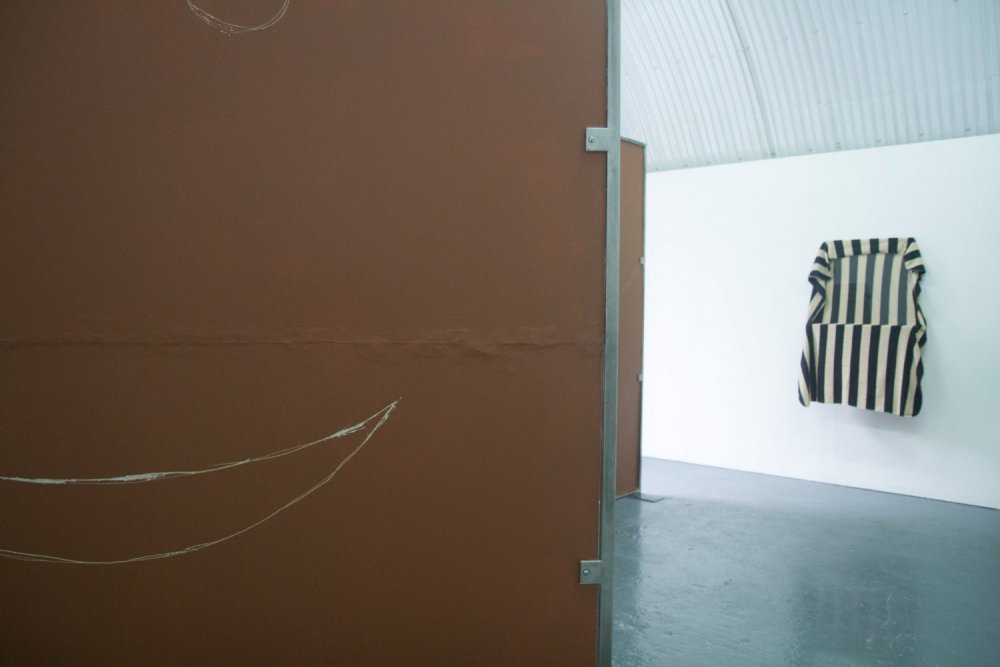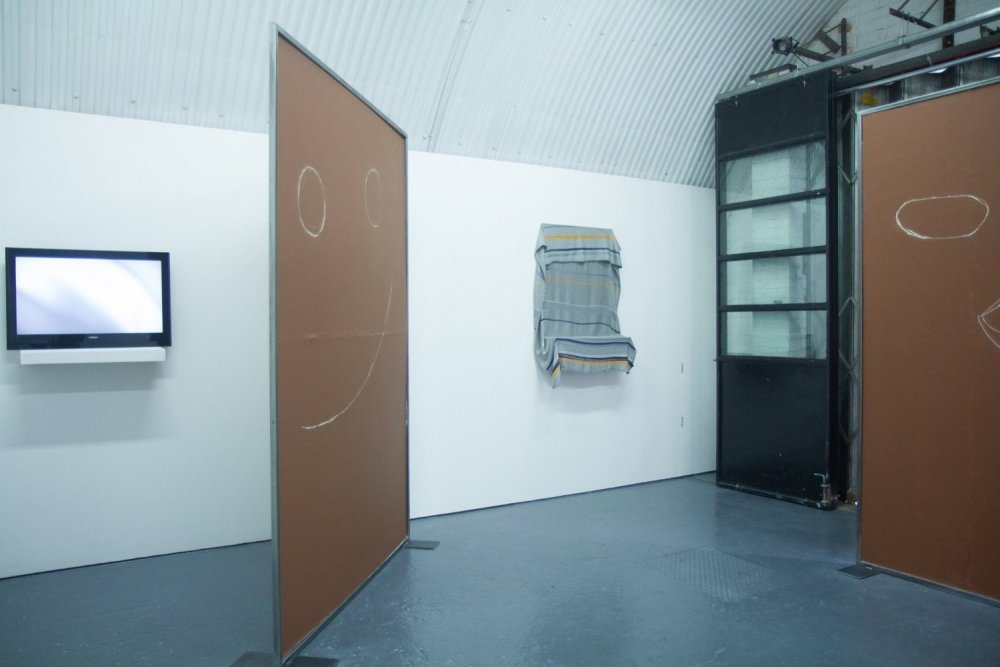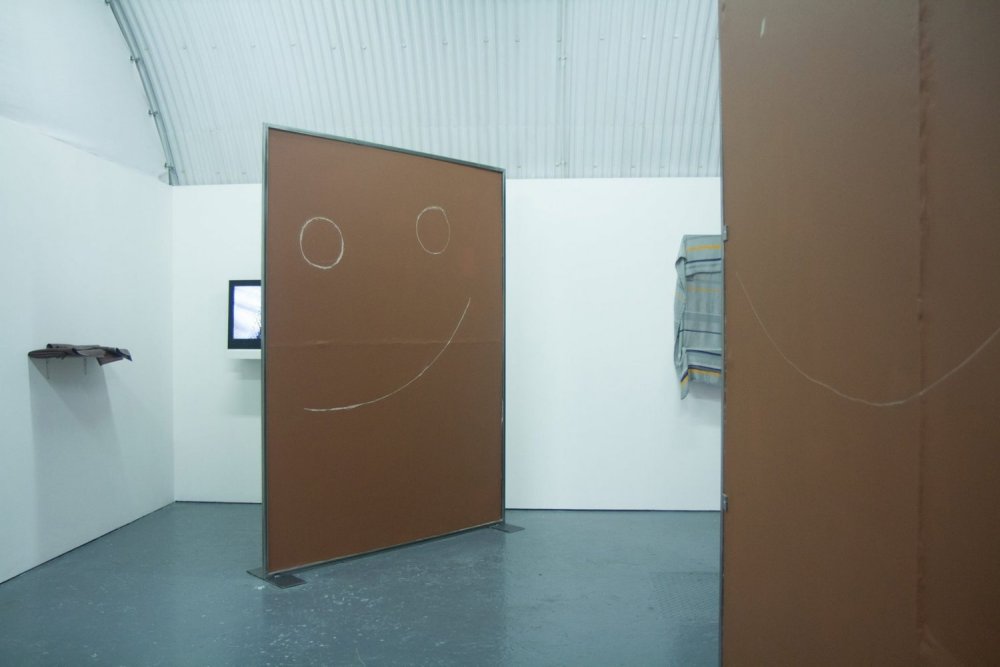When I walk into Not You, Hannah Black’s recent show at London’s Arcadia Missa, which ran October 2 to 31, my thoughts go to a piece of work the artist made in 2013 called ‘Intensive Care’ which was a pane of latex cut into like a kind of paper snowflake to reveal a beautiful hole-y, hurt and intended pattern upon unfolding. I’m not sure why but I read more about the work in a Rhizome Profile on Black, written by Jesse Darling. Mainly I think about the material of latex: what it looks like (skin) and what it is to cut into it and to hang it up and present it as something beautiful – or beautified. A lot of Not You (and its work) seems petrified or inwardly folded and, despite being full of alluring analogies like latex folds and something being folded in on itself, it is difficult not only to read but actually also bear/bare. I mean it is more difficult than words around it can really convey but still, you listen, you feel and you totally understand the undulating swirling mode in which language, language about ‘bodies’ and language about black bodies starts to fold in on itself. I keep getting told by art people to read the Art Forum summary piece written by Paige K. Bradley, as told by Black, about Not You because it clears things up but I don’t want to. I enjoy the text Black has written for the show instead, which sort of says it all.
There are four brown boards called ‘Black Quadrilateral [I-IV]’ (2015), installed upright and evenly across the Arcadia Missa Space painted in the same colour as Black’s skin -pigment matched at hardware store, B&Q, I am told by one of the gallery assistants. Now it seems difficult to talk about them without describing them as faces or standing bodies or figures, but they don’t feel right in this zone of personhood somehow. The surface layer on top of these boards is really, really thick: all the better, it feels, for Black to cut through and etch into. On both sides of all boards thinly scratched wide, empty eyes and upside downs frowns (smiles) are left bare in relation to the brown thick paint that pans the rest. You know how a child might draw a mouth? These ones are always smiling. There is something really sorrowful about this and Black’s grins capture it incredibly specifically and tenderly. The mouths and their crooked curves stay with you. These are, it seems, less ‘bodies’ and more mouths.

Back in the room, Hannah Black’s distinctive voice is sounding loudly from the far corner. There is a new video called ‘All Over’ (2015) there, hiding behind the farthest ‘Black Quadrilateral’. “Don’t worry, I know what love is. Don’t worry, I’m not angry” comes out in a calm and also curt tone that has a sudden as well as a long-term effect -like the mouths. There is something piercing about beginning a qualifying sentence with “don’t worry”. It feels like a kind of acknowledgement that is akin to a deep and maintained eye contact that is as protective and denying as it is defensive. Black’s use of ‘I’ in the work as well as Not You’s text conjures huge specific oceans of truths -or what’s maybe best described as living-in-space -behind things:
“– and again at passport control, where I queued for a long time and tried to keep my face neutral for the border cop’s gaze”.
Behind things in this show could actually be behind words. A lot of the pieces, like the latex folds of ‘Zaum’ (2015) on its shelf, and the airplane blankets poised/posed as chairs up against the walls held behind by glass panes, feel as though in their conception and also their interpretation descriptive words came first and the object is stuck. This is strong and it runs through the whole show like jet lag. Behind words could also be beneath words, and Black has paired (spoken) words with backgrounds in ‘All Over’.
A white image that has waves of white sand washing over its surface is underneath the spoken words: “This is the part we know… This is the part where something happens”. A cough that sounds like it was recorded inside a person’s throat brings the image into a darkness – a black image now, but still paired with waves rolling over the top. The undulations are more similar to smoke this time and it becomes really possible that there is a mist flowing on top of the TV’s screen, in front of your eyes. The lowered voice repeats: “This is the part where nothing happens”.

There is a lot less said in this part. Fewer words. Despite the shared affinity between the (seeming) material qualities of the white and black images that are moving inside the ‘All Over’ video work, this dark part is the ‘part where nothing happens’, as Black says. All at once, all generic applications of ‘movement’, of shared languages, of ‘bodies’ and its usership as a word -and by whom, of readings and of interpretations are turned inside out, frozen, petrified. It’s like Black has exhaled this into the slightest and specific material moment of flowing smoke-y waves to say: this language is shared but not shared.
What is the relationship between words and backgrounds beneath? The question isn’t necessarily being asked in terms of content, here, but more perhaps in terms of presentation and expression.
There are illustrations in the latter part of the video, which move to a scene of a flat map with a diagram of a man moving around (or being moved as though he has a pin underneath him, if he were made of paper). It is not easy to experience this because it is so literal. And yet the red rivers on the map feel painful on a level that carves out even further both the uncomfortability Black describes in the show’s text about finding analogy everywhere, and maybe also the desire to try and resist it. Speaking via another thing’s meaning is like speaking via another person’s being. How can you escape and just flow? **
Exhibition photos, top right.
